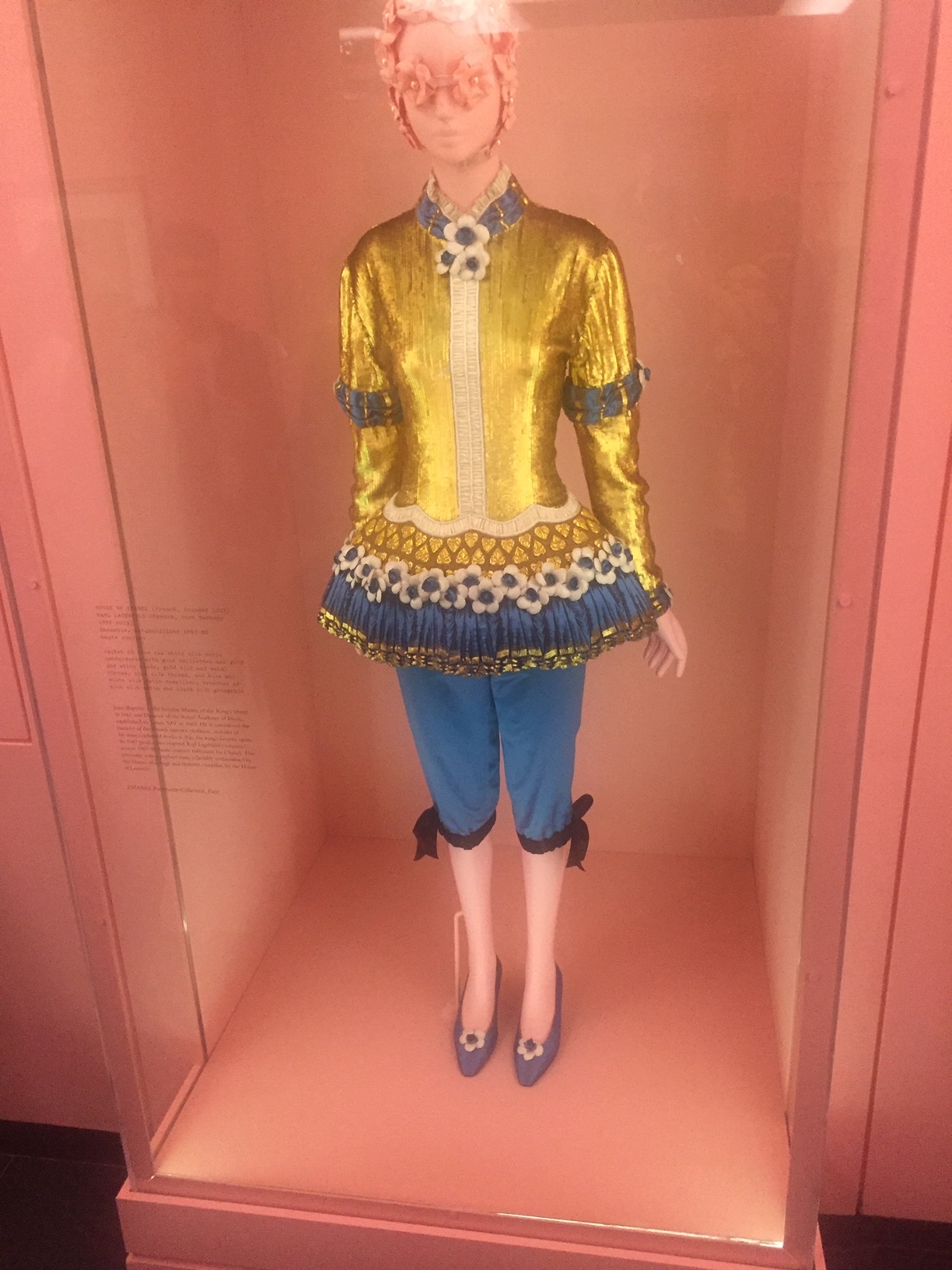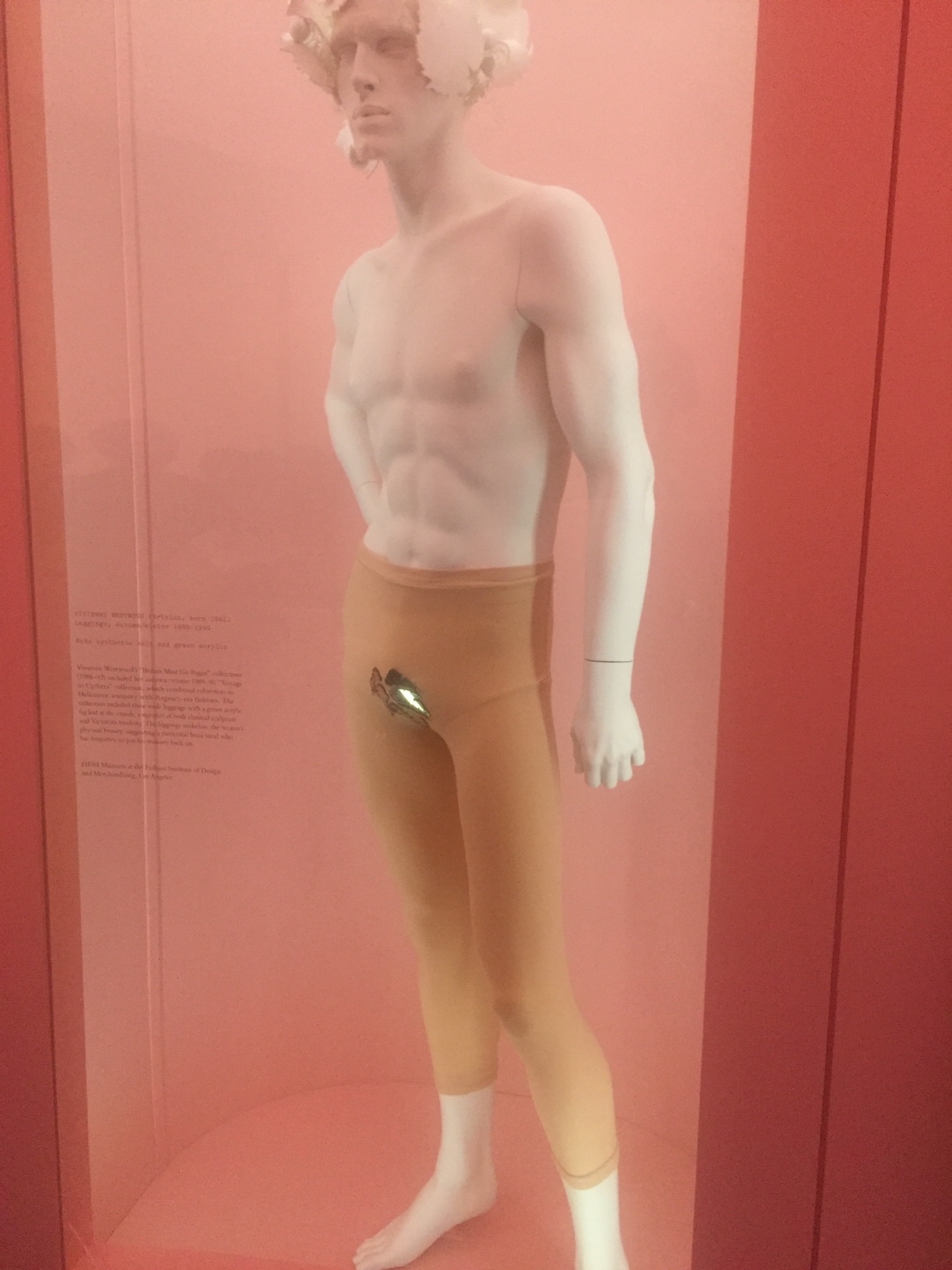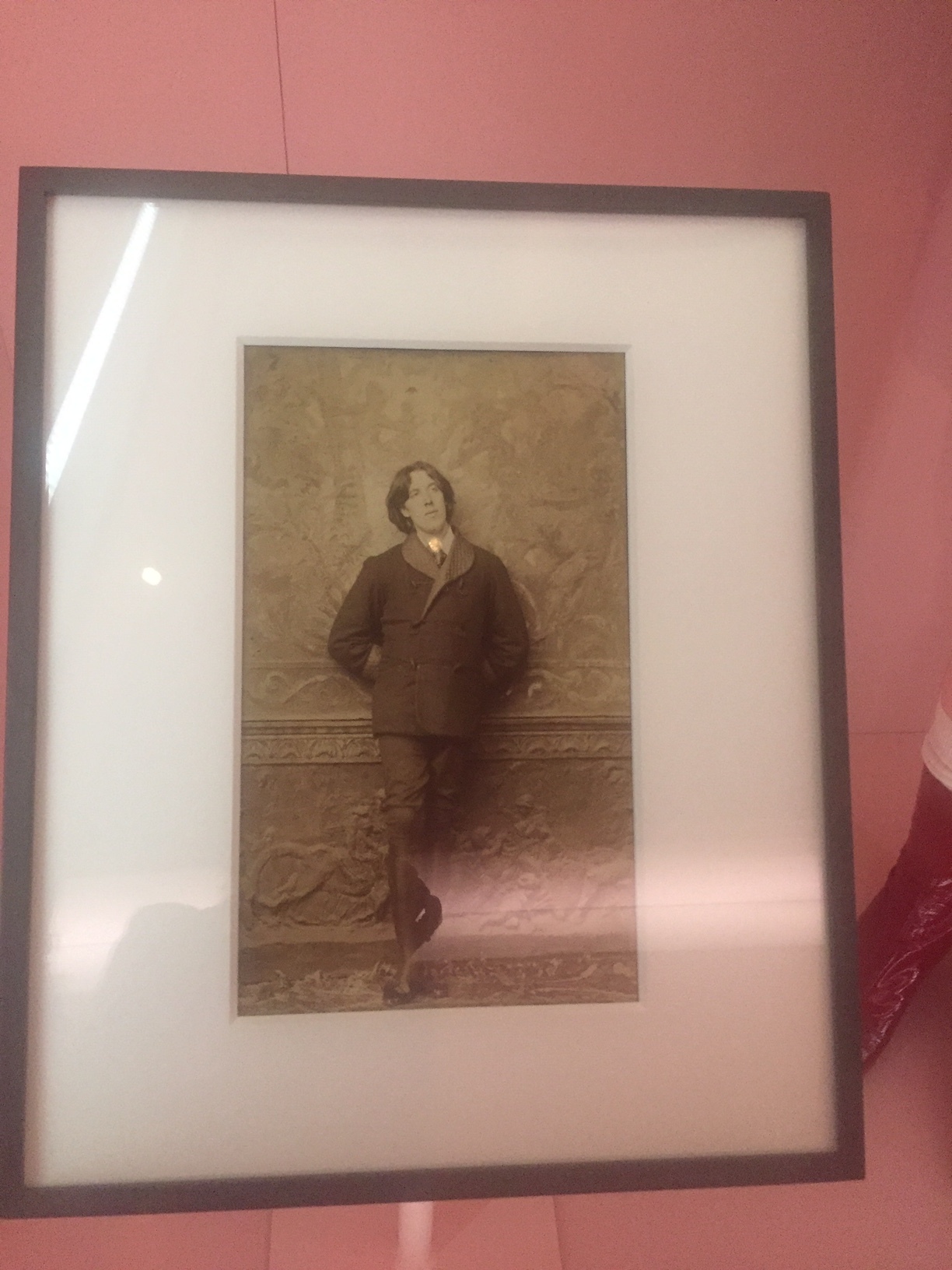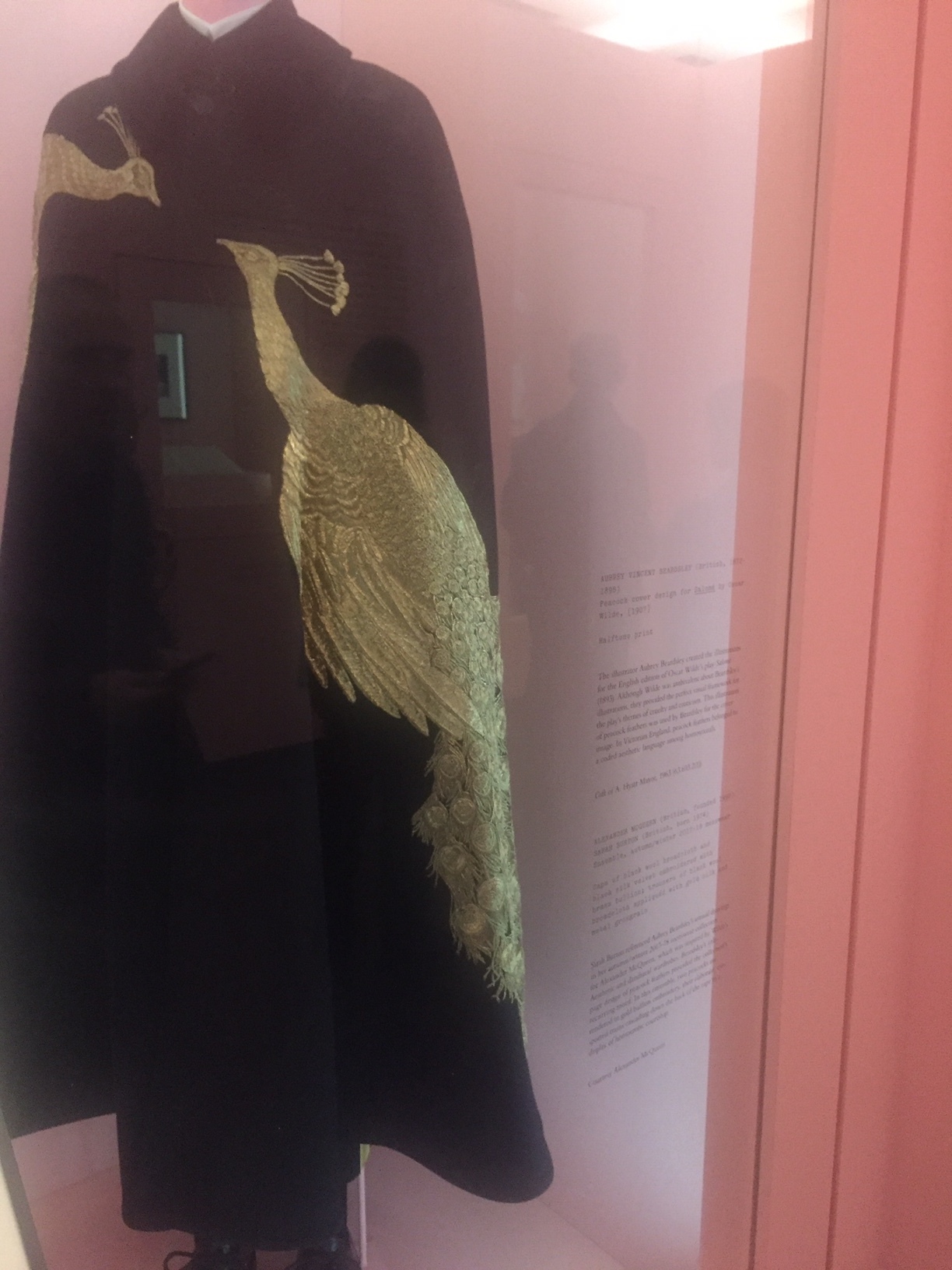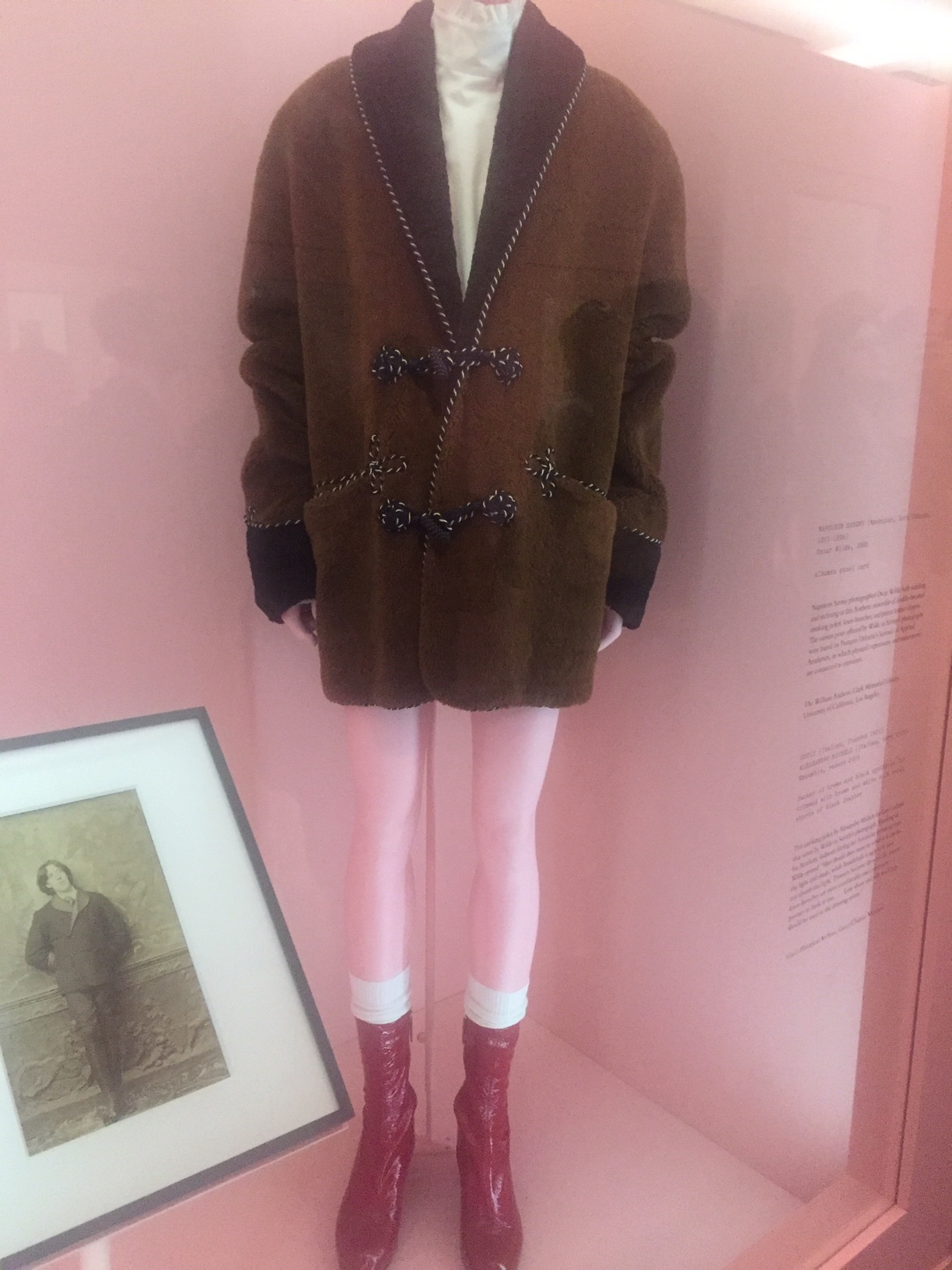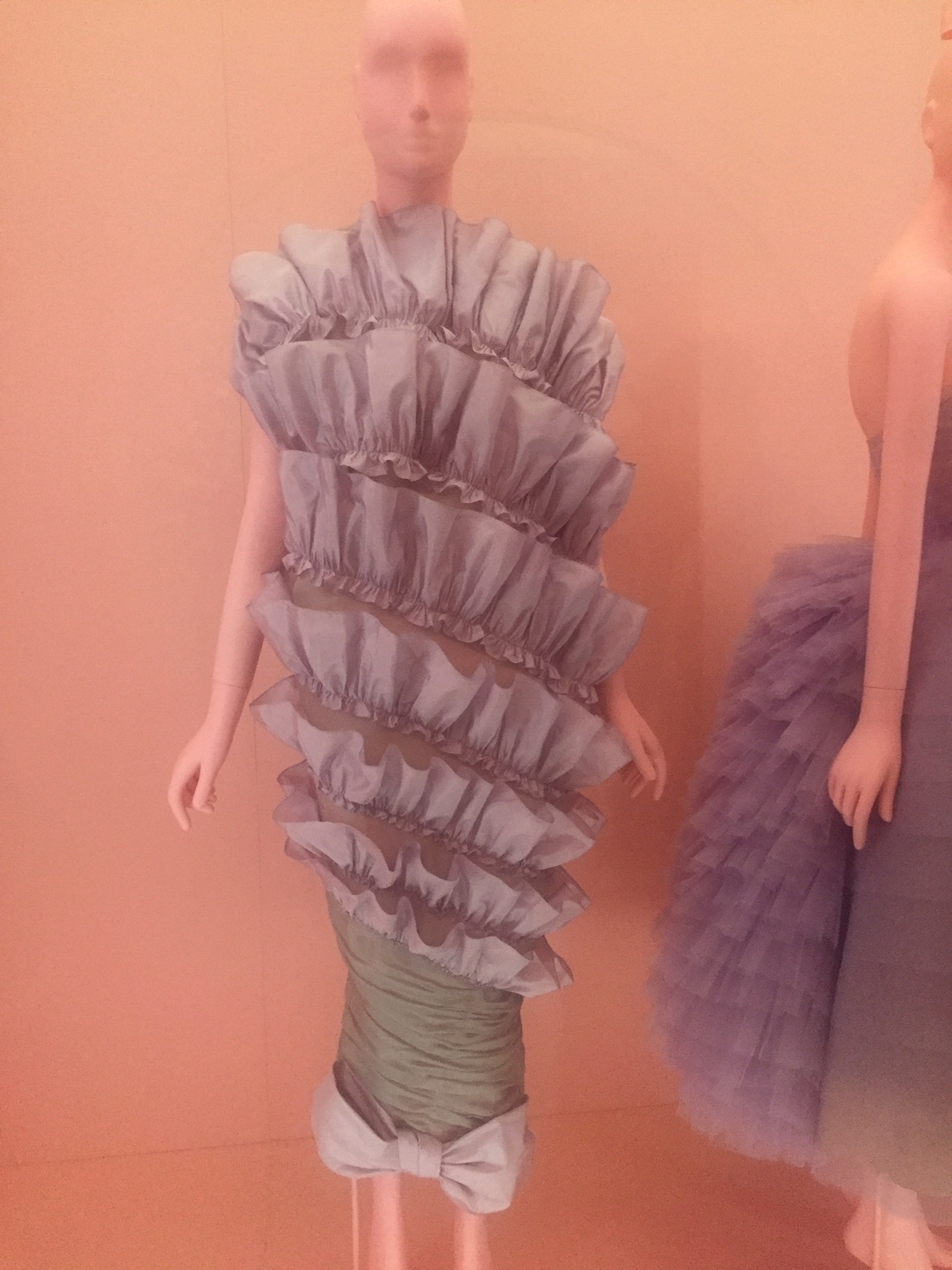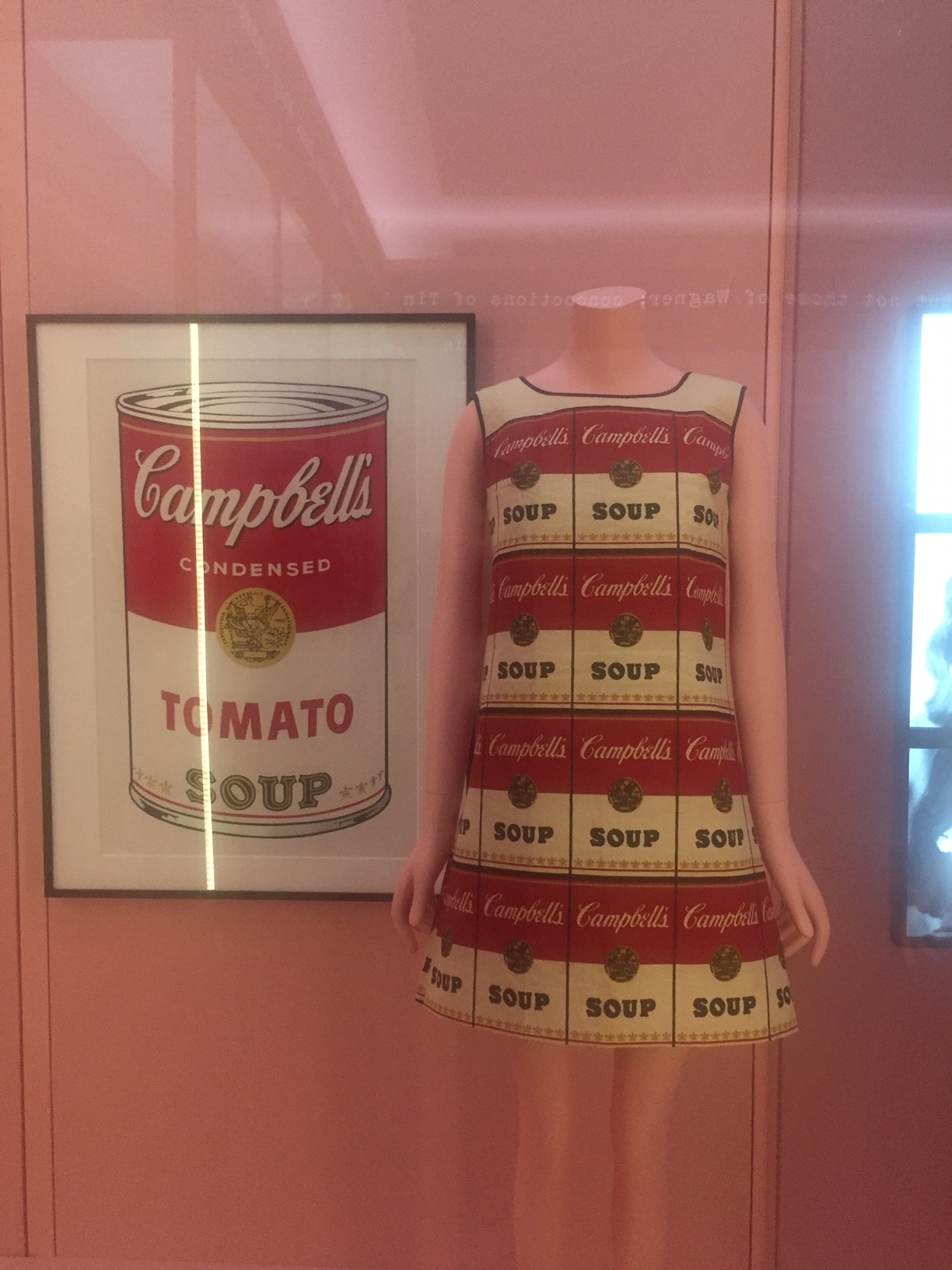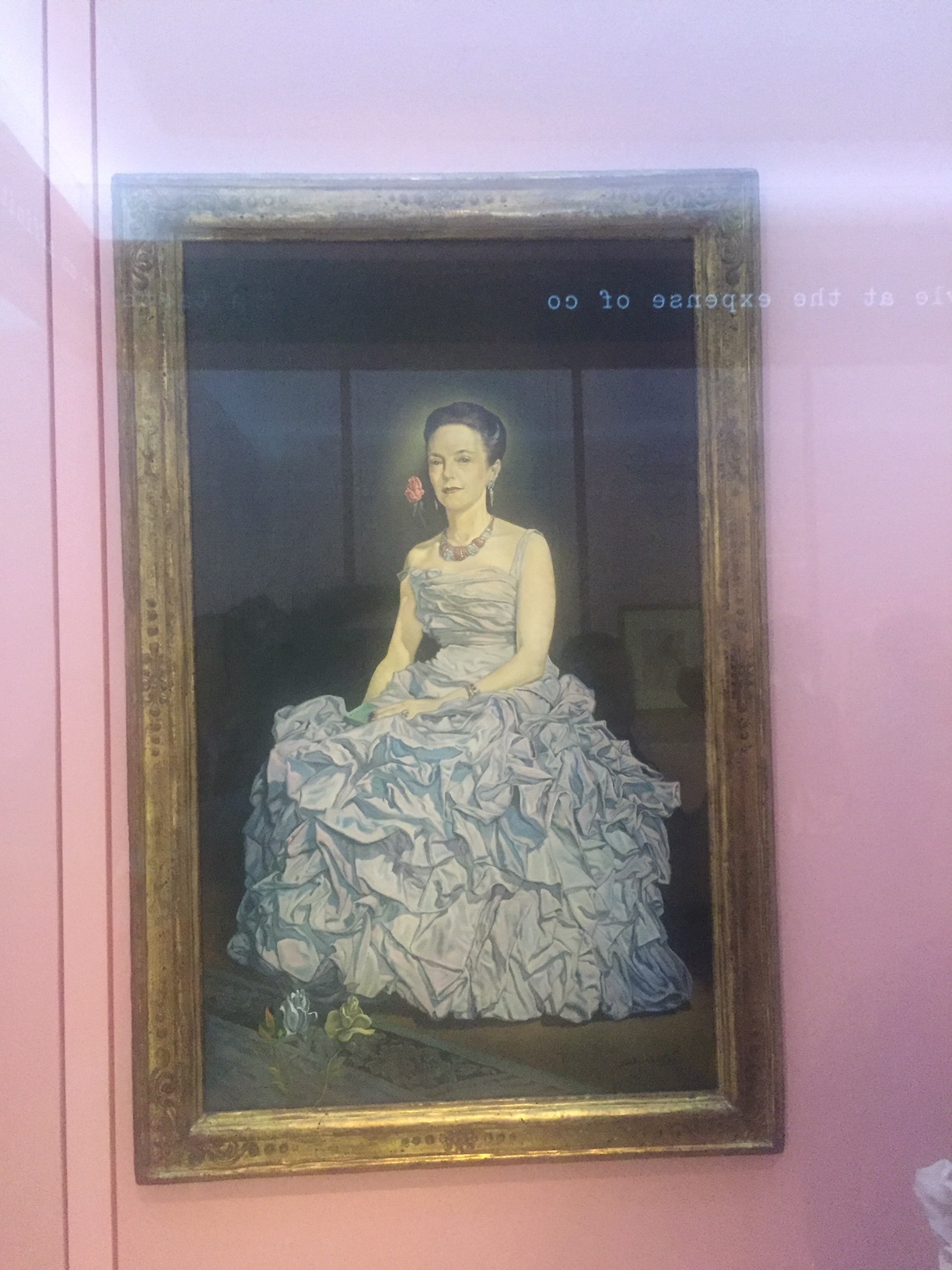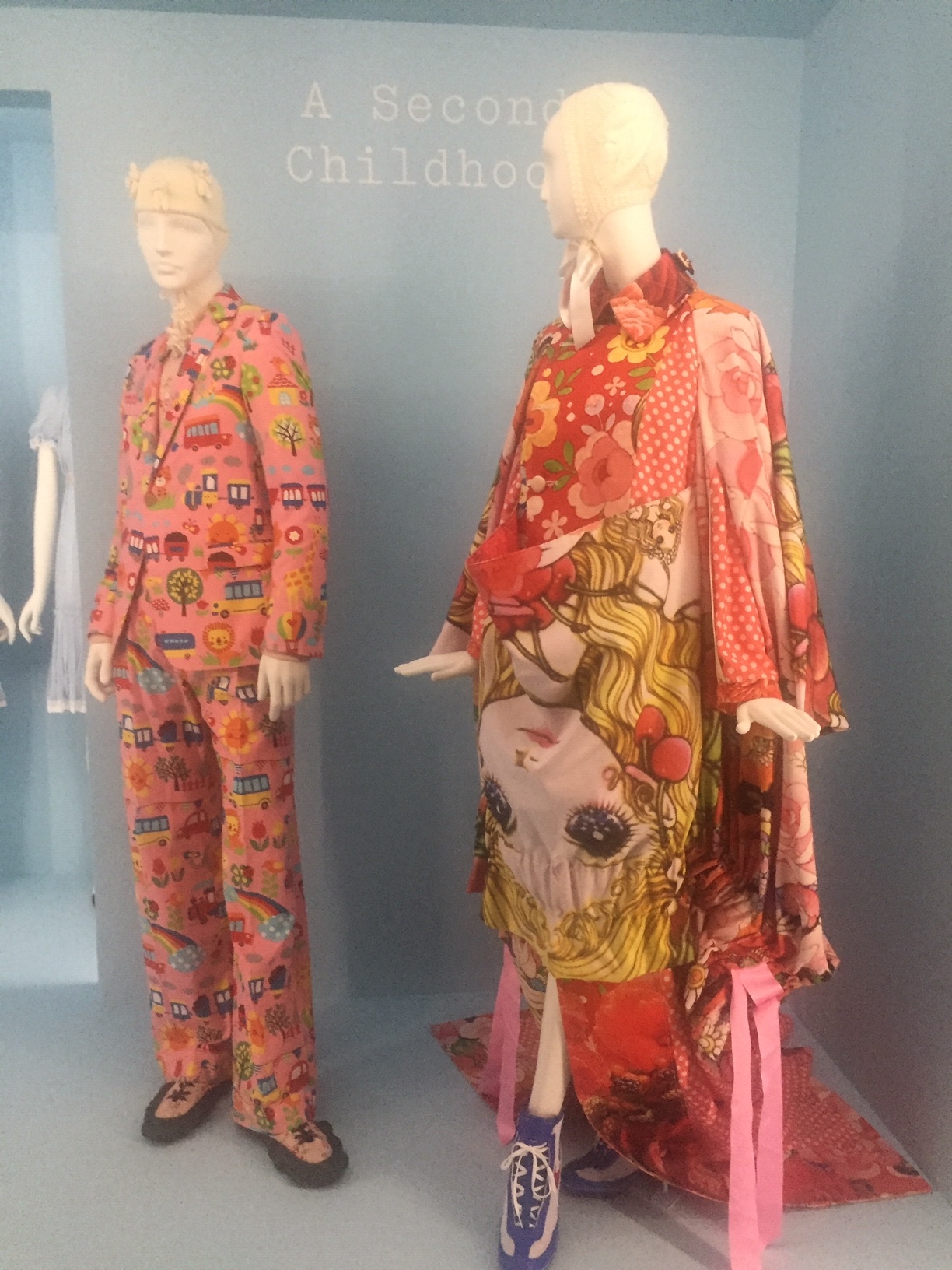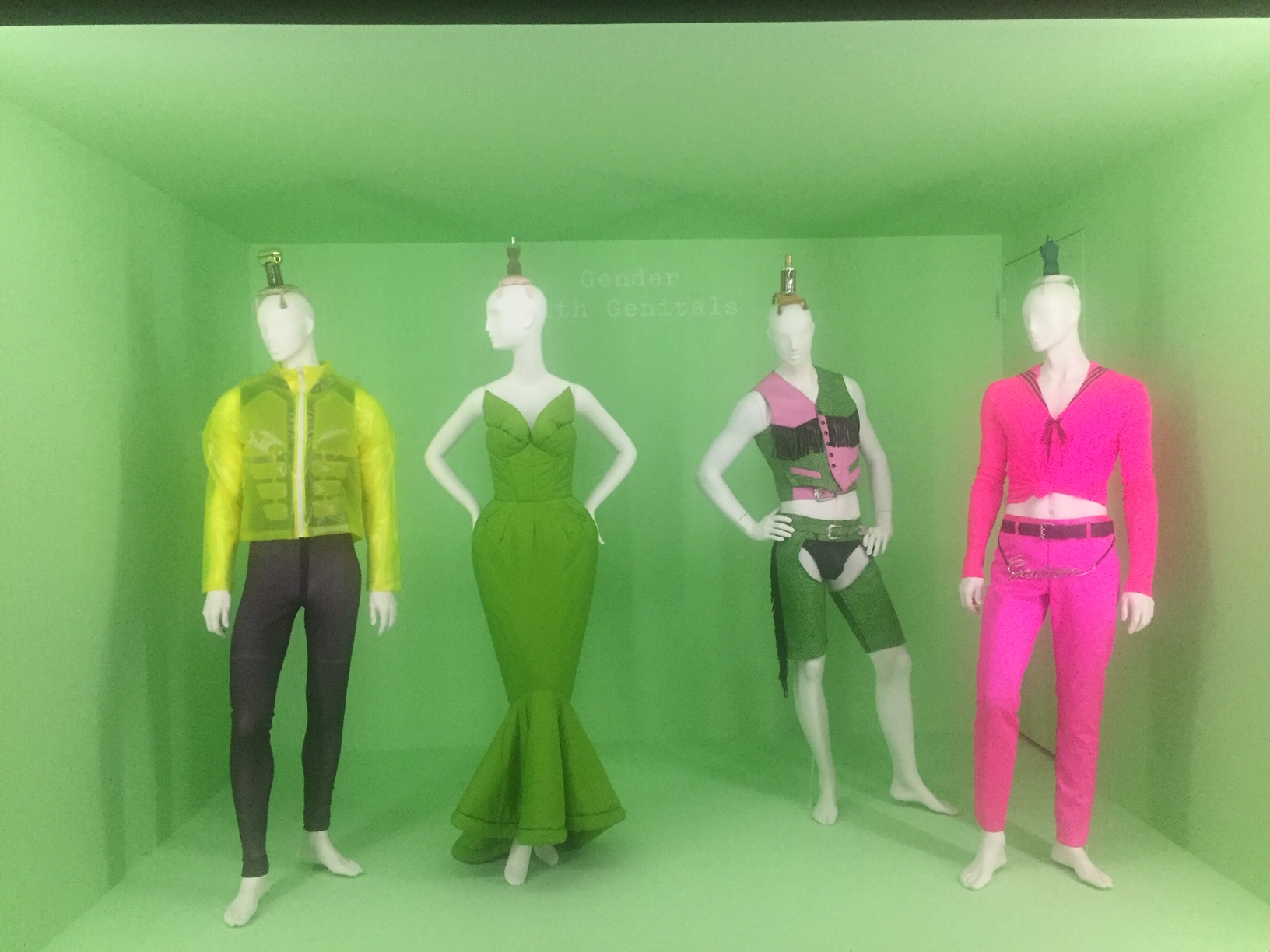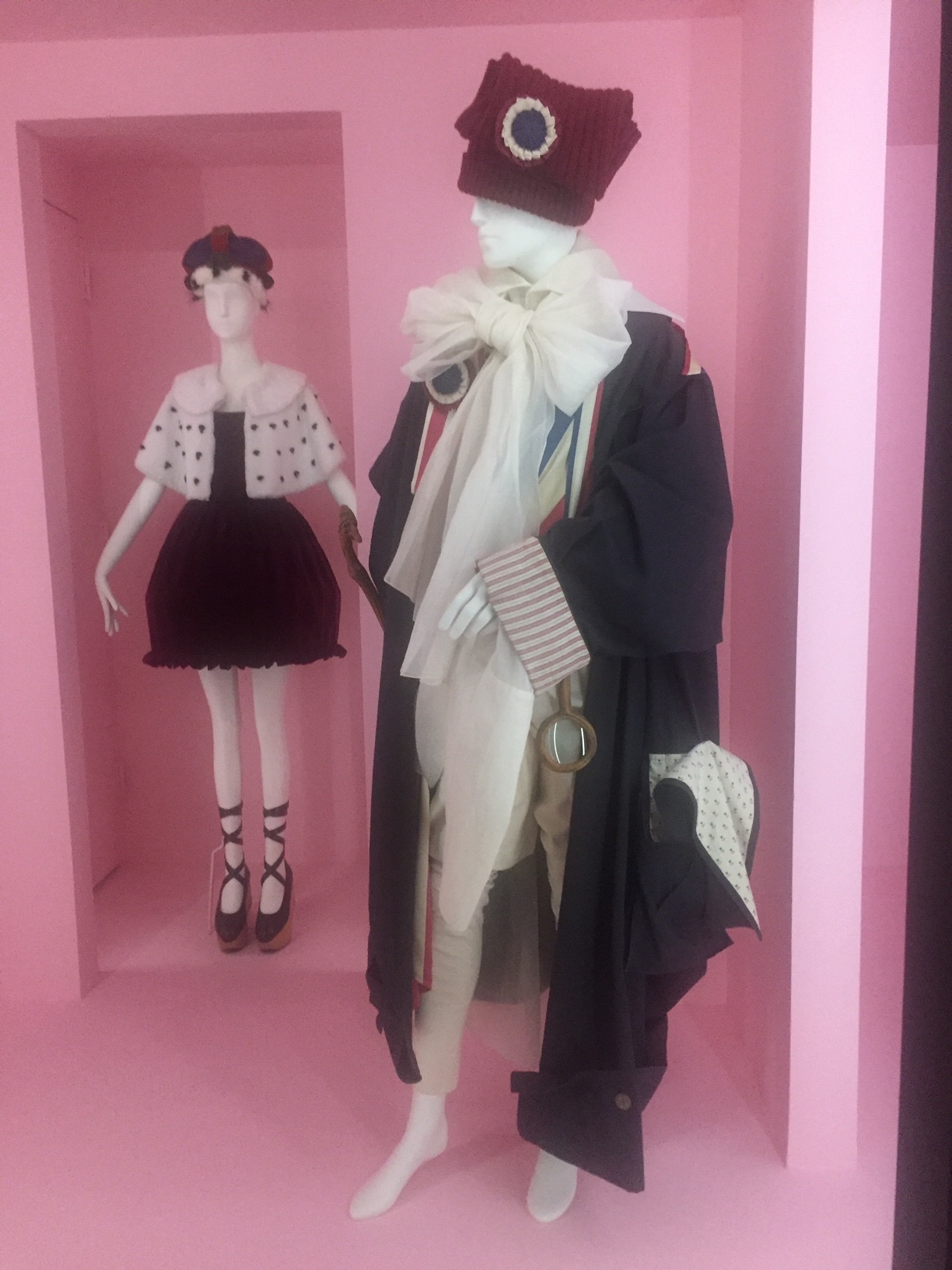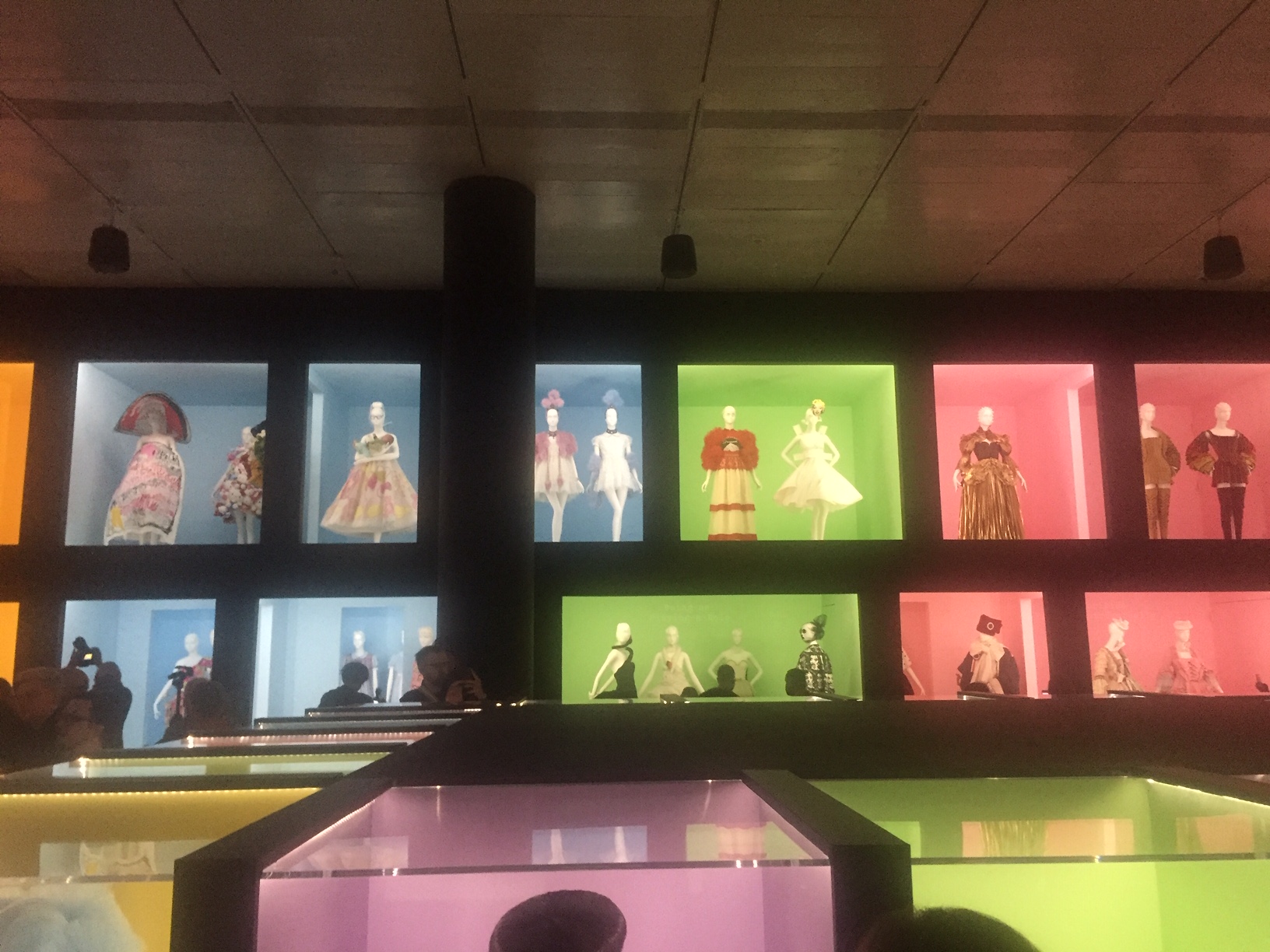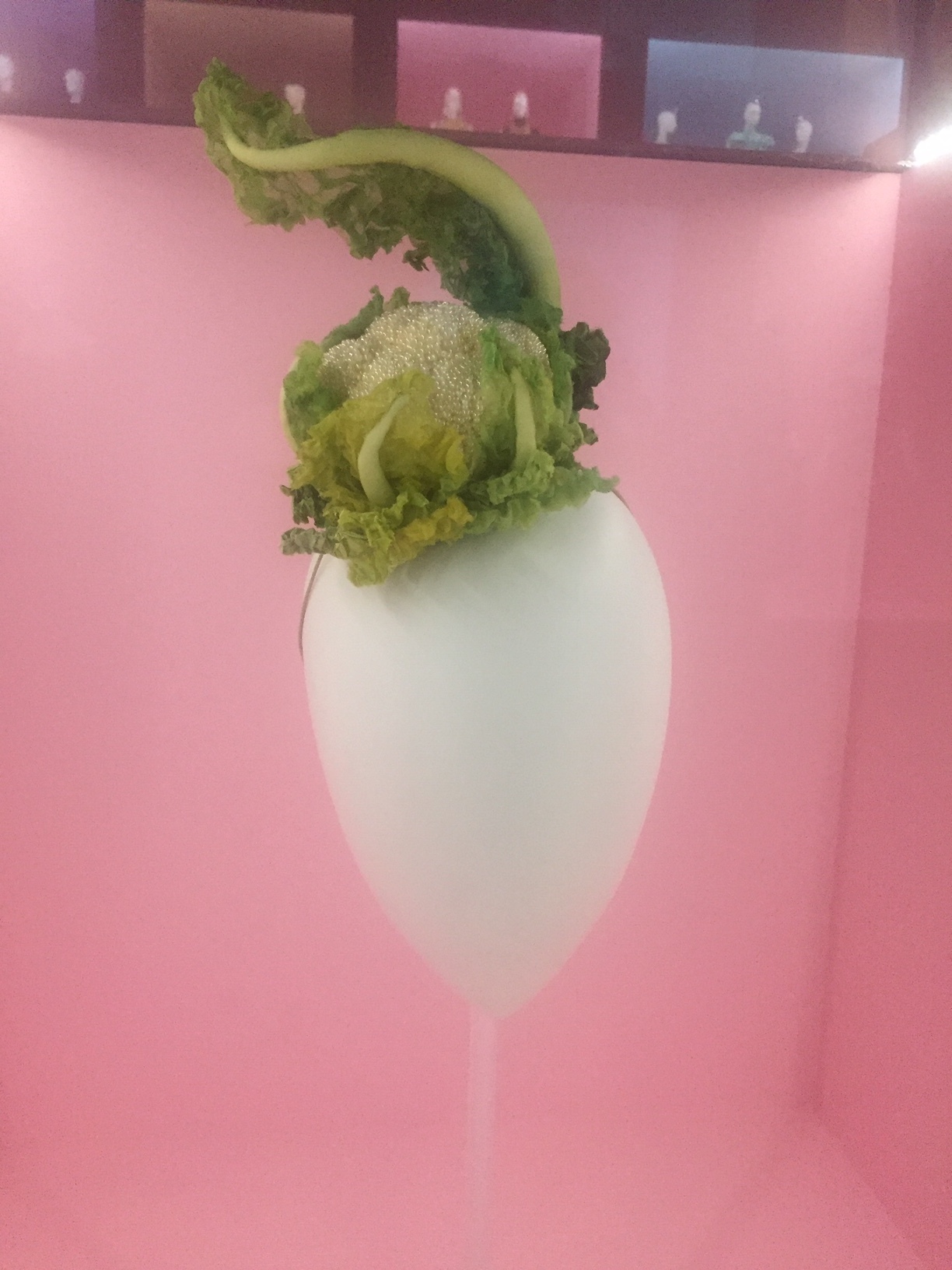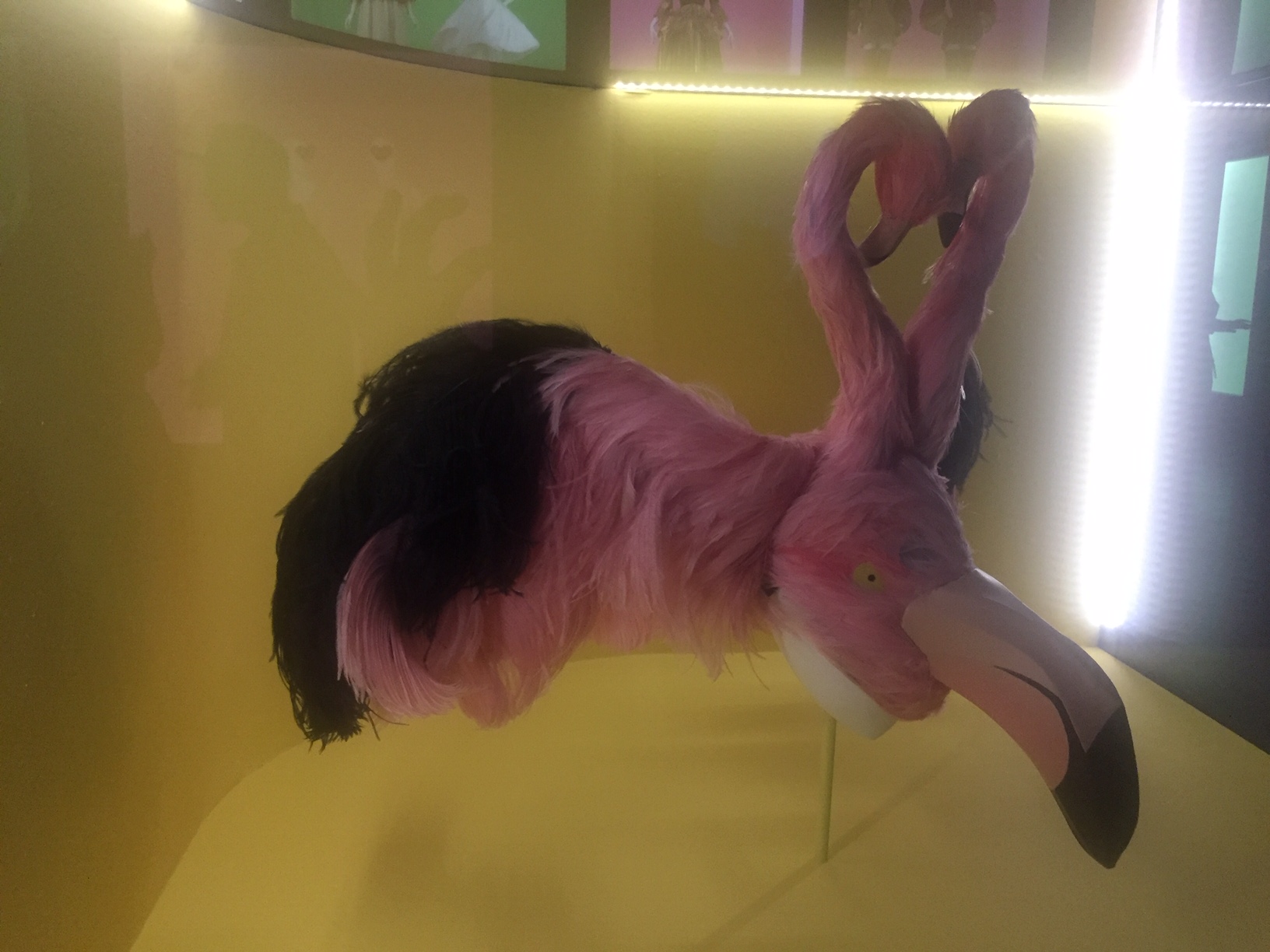Camp is Here! You might be watching the red carpet stars but the exhibit itself is where the buzz is, and this year is no exception.
Coming on the heels of Heavenly Bodies, an exhibition of religious and religious-inspired fashion that was so rich it migrated on bended knee up to the Cloisters, Camp skews in the exact opposite direction—with delightful results, if not at quite the same level of wow. From the sublime to the ridiculous to borrow a phrase I believe curator Andrew Bolton and his team at the Met Museum Fashion Institute would roundly endorse.
Bolton has been asked what is camp. Well, it appears to be just about everything under the sun if you say it is. Bolton says Camp is most emphatically aroused when society is divided, eg before the French Revolution, the sixties, the eighties, and of course, today.
Section A, Bolton’s “Whispering” galleries kitted out in ballet pink posit that Camp began in the court of Louis Quatorze, the Sun King. Moliere, his court playwright, coined the verb ‘se camper’ or to ‘posture’, (similar to ‘flaner’ which connotes a more active sashaying down the street; Vogueing a contemporary take) “Camp about on one leg. Put your hand on your hip. Wear a furious look. Strut about like a drama king” his character Scapin advises. The mannequins have fascinators, pink bows, glittery pink caps by Stephen Jones. They look innocent but they are often wicked! Judy Garland croons Over the Rainbow.
Homework Assignment #1:
Binge watch Versailles (Amazon) and the film A Little Chaos (Netflix) before you come as you will have the full flavor of the early period of Camp.
Camp morphed successively over the decades into a phantasmagoria on gay life, homosexuality, intersexuality, hermaphrodism, cross dressing, female impersonation, non binary-ism, queer aestheticism, dandyism et al. Ergo the ‘whispering’ as it was illegal to be or do any of the above until the latter part of the 20th century. Yet this vibrant multi-pronged subculture was constantly reinterpreting fashion, words, music, dance and theater. Fanny and Stella, two cross dressers figure importantly in this section as does playwright Oscar Wilde and artist Aubrey Beardsley. Rupert Everett who played Oscar Wilde in a film provides narration. These early historic sections are the most interesting of the exhibition.
A transition gallery marks the onset of Camp from the margins to the mainstream.
Section B, “an echo chamber” of contemporary fashion is hung in a grand double stacked display in the last large gallery. Gucci funded this exhibition so there is plenty of furry slides and as always, the curatorial eye of this section accommodates many of the designers upon whom the Institute depends for loans and support. It’s bold and colorful and a central set of vitrines isolates hats and jewels and bags. (Check out the Cauliflower hat) But one is hard pressed to understand the difference between Camp and fashion.
Christopher Isherwood separated Camp into High and Low, High having more to do with intentionality (artists) and low a more overt trolling for sex (sailors;).
Susan Sontag went further still with this differentiation of ‘naïve camp’-seriousness that fails- and ‘deliberate’ camp. Sontag is in point of fact the mannequin over which this exhibition is most fully draped.Her Partisan Review essay, Notes on Camp, which took the temperature of Camp in 1964, provides an organizing principle for many of the displays including a room in which her own essay referents from the Met are displayed. Making camp the subject of an academic essay both secured its place in the culture and made it more self-conscious. This diminished a bit of the spontaneity though none of the cleverness. A digital ticker tape of her 58 thoughts on Camp a la Jenny Holzer is the soundscape, and it’s very effective.
(An aside: I met Sontag about a decade after her essay when she was in a relationship with the actress and film producer Nicole Stephane who had appeared in Cocteau’s film Les Enfants Terribles which I didn’t see listed in this catalog but could be called Camp, along with much of Cocteau’s oeuvre. Sontag was most imposing and definitely not Camp herself. )
Homework Assignment #2:
Read Notes on Camp.
It seems like almost anything can be camp if properly framed and there the curators run into some fuzzier waters. I tried to follow Bolton’s inclusions but just as there is no one definition of camp, there is here no one narrow curatorial imperative. Camp is “irony, humor, parody, pastiche, naïveté, duplicity, ambiguity, artificiality, theatricality, extravagance, exaggeration, and aestheticism” Is the message that gay and non-binary aesthetes have been the leading edge of many artistic disciplines—something I already know and emphatically believe? That line of thinking is risky if we turn the question on its head. Is everything gay therefore Camp? A current exhibit at NYU’s Grey Art Gallery on the Art after Stonewall shows a side of gay life which is sometimes Camp but often deadly serious and tragic.
By the end of the exhibition, I came to have my own definition. Camp, as it has been presented by the Met, is a stylish, clever, often extreme riff on the themes of the day. And most important: camp makes you smile. Bravo once again to Bolton and the team. They are deeply creative and resourceful and have sealed fashion’s fate among the highest of arts. I think instead of worrying about a new building, newish director Max Hollein needs to let them have at re-installing the rest of the museum. Maybe not that much cheaper, but worth it.
Herewith a few of my own camp icons:

